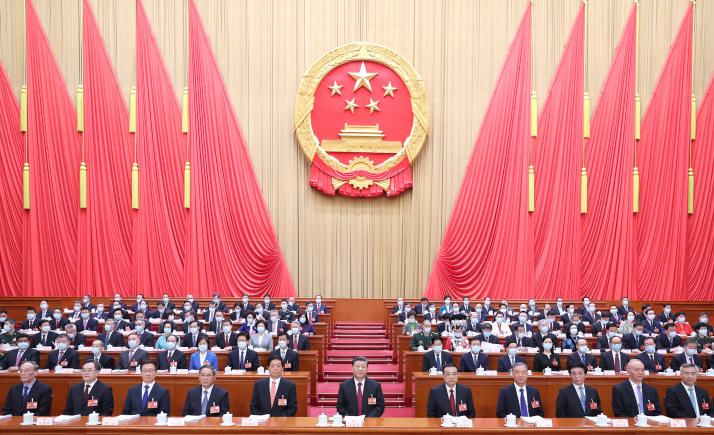BEIJING: China has set its GDP growth target at around 5 percent for this year. The target was revealed in the government work report delivered by then Premier Li Keqiang at the opening meeting of the First Session of the 14th National People’s Congress (NPC), China’s highest state organ of power, in Beijing on March 5.
The growth target of around 5 percent “is necessary to ensure stable growth, employment and prices,” according to a report on the implementation of the 2022 plan and the draft of the 2023 plan for national economic and social development, submitted by the National Development and Reform Commission (NDRC), the country’s top economic planner, on March 5.
“It will be a positive signal to the market and will bolster confidence, guide expectations, expand employment, improve living standards, and prevent and defuse risks while pursuing development,” the NDRC report said.
This year’s GDP target is also consistent with the growth potential of the Chinese economy at present and with the capability of resources and production factors to support the economy, according to the report.
“This suggests the government’s focus is on high-quality economic growth. I believe this target is achievable,” Yu Miaojie, President of Liaoning University and a deputy to the 14th NPC, told Beijing Review while attending the annual legislative session in Beijing, which concluded on March 13.
“The growth target is achievable in light of China’s average annual GDP growth rate of 6.2 percent in the past 10 years. Also, as the country has adjusted pandemic control measures, its economic vitality will be unleashed and the economy will see a recovery,” Jin Li, Vice President of the Southern University of Science and Technology and a member of the 14th National Committee of the Chinese People’s Political Consultative Conference, the top political advisory body, told People’s Daily.In January, the International Monetary Fund (IMF) raised its forecast for China’s economic growth to 5.2 percent in 2023, up 0.8 percentage points from its projection in October last year, as it said the country’s reopening has paved the way for a faster-than-expected recovery. Pent-up demand could also fuel a stronger rebound in China, the IMF said in its World Economic Outlook report released in January.
China’s economic rebound is having a significant positive spillover effect on the regional growth of Asia, Krishna Srinivasan, Director of the Asia and Pacific Department of the IMF, said.Srinivasan further said during the International Finance Forum One-on-One Global Dialogue on March 3 that a 1-percentage-point increase in China’s growth leads to a 0.3-percent growth in output level across Asia.
A pickup in China’s tourism has “had a huge impact” on countries like Thailand and Viet Nam, he said, adding that recovering consumption in China will boost the exports of its trading partners in the region.
–The Daily Mail-Beijing Review news exchange item






